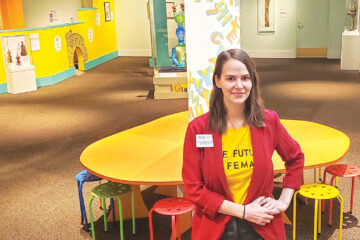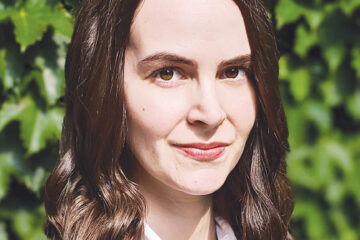Dayton Art Institute exhibit features Jewish-themed works by Rembrandt
Rembrandt at DAI
Robert Thum
Special To The Observer
With more than 2,000 works to his name, Rembrandt devoted a portion of his work to narratives from Hebrew Scriptures, portraits of contemporary Jewish leaders, and the Jewish culture and daily life he saw in Amsterdam.
Four of these Jewish-themed works will be on display at the Dayton Art Institute from Sept. 24 through Jan. 7 as part of the American premiere of Rembrandt and the Golden Age of Dutch Art: Treasures from the Rijksmuseum, Amsterdam. The four works are etchings on loan from the Montgomery Museum of Fine Arts in Montgomery, Ala.
The exhibition — the first of only three stops for the show in the United States — is in celebration of the 400th anniversary of Rembrandt’s birth.
It is difficult to know what inspired Rembrandt to create a body of Jewish-themed art or why he had a fondness for the Jewish faith.
However, in contrast to other European countries of that time, Holland welcomed Jews, and to a large degree, protected their rights. Altruism was not the chief motivator for this tolerance, but rather the recognition by government and business leaders of how the Jewish community could contribute to an expanding mercantile Dutch economy.
By all historical accounts, this relationship worked well for both the Dutch economy and the Jews of Holland.
The growing Jewish community, neighbors among the Christian populace, contributed talent and investments to an economically expanding Holland. The Jews were allowed to practice their religion without government harassment.
Many 17th-century Dutch artists reflected this tolerance through Jewish-themed artwork and did so with dignity and respect.
The 17th century, known as the golden age of Dutch art, is also referred to by Jewish historians as the golden age of Judaism in Holland. This is not to say that the government eliminated all social and business restrictions on its Jewish citizens, for that was not the case. Restrictions not withstanding, it is even recorded that some Jewish community leaders of the day saw Holland as the new Jerusalem.
It was in Vlooienburg, the 17th- century Jewish quarter in Amsterdam, that Rembrandt and other Dutch artists lived and painted. This was where Rembrandt formed his friendship with one of Europe’s most prominent rabbis, Manasseh ben Israel.
Along with other master artists such as Van Ruisdael, and DeWitte, Rembrandt became familiar with the religious practices of the people the Dutch knew as the “Hebrews.”
The Dutch masters detailed the interest taken in this community, and while portraits of prominent Jewish leaders and men of wealth were painted as commissioned works, many Jewish-themed paintings were completed because the subjects appealed to the artists.
Of particular interest to the Dutch were works depicting narratives from the Hebrew Scriptures.
Rembrandt created art that illustrated conflict, and just about all his work with Bible themes demonstrates such conflict. Whatever the subject, he painted with particular sensitivity.
Steven Nadler, in his book Rembrandt’s Jews, explains how the Dutch saw the Jews as “God’s Own People” and identified with ancient Israel in their own fight for freedom from Spanish tyranny and Catholic persecution.
That theme was recalled by Rembrandt and other artists in narrative biblical artworks composed from the story of Esther. As the Jews were able to celebrate their victory over Haman, so too were the Dutch able to celebrate their victory over Spain.
The fact that many Dutch artists of the golden age composed secular and religious Jewish-themed works shows the appreciation these artists had for the people who émigrated from Spain and Portugal, a people who had faced the horrors of the Inquisition.
Jewish-themed works on display at the Dayton Art Institute as part of the Rembrandt exhibit:
• Abraham and Isaac
• Abraham Casting Out Hagar
• Joseph & Potiphar’s Wife
• The Jewish Bride
The Dayton Art Institute, 456 Belmonte Park North, is open Saturdays-Wednesdays, 10 a.m.-4 p.m., Thursdays and Fridays, 10 a.m.-8 p.m. For more information, call 223-4ART or go to www.daytonartinstitute.org.
© 2006 The Dayton Jewish Observer






